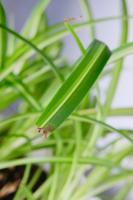Introduction
The loss of water through transpiration is a major concern for plants, especially in arid environments. The spine, which is a modified leaf, plays an important role in reducing water loss through transpiration. Therefore, the question arises: Does the spine in plants decrease water loss? In this article, we will explore this question in detail.
Anatomy of Spines in Plants
Spines are modified leaves that have evolved in various plant species for a variety of reasons. In some plants, spines are used as a defense mechanism against herbivores, while in other plants, they serve as a structural support for the plant. The anatomy of spines varies depending on the plant species. However, they all share some basic characteristics. Spines are typically small in size and have a reduced surface area compared to regular leaves. They are also generally covered with a thick waxy layer, which helps reduce water loss through transpiration.
Water Loss through Transpiration
Transpiration is the process by which water is lost from plants in the form of water vapor through the stomata. Stomata are tiny pores on the surface of leaves that regulate the exchange of gases, including water vapor. When the atmosphere is dry, the stomata close to reduce the amount of water loss. However, when the atmosphere is humid, the stomata open to release excess water.
Role of Spines in Reducing Water Loss
Spines serve as an adaptation to reduce water loss through transpiration in plants. The reduced surface area of spines means that fewer stomata are present, which reduces the amount of water lost through transpiration. The thick waxy layer on the surface of spines also helps to reduce transpiration. Furthermore, spines are often positioned in such a way that they create a boundary layer of still air around the leaf surface. This layer acts as a barrier to prevent water loss through transpiration.
Examples of Plants with Spines
Plants from arid environments are more likely to have spines as a means of reducing water loss. Examples of plants with spines include cacti, agaves, and acacias. Cacti, in particular, have large and prominent spines that serve as a defense mechanism against herbivores. The spines not only deter herbivores but also create a boundary layer of still air around the surface of the plant, which helps reduce transpiration.
Conclusion
In conclusion, the spine in plants does play a significant role in reducing water loss through transpiration. The reduced surface area, thick waxy layer, and positioning of spines all contribute to reducing water loss. Spines are an adaptation that has evolved in various plant species to help them survive in arid environments. Therefore, the spine is an essential feature to consider when studying the water relations in plants.

 how many times do yo...
how many times do yo... how many planted tre...
how many planted tre... how many pine trees ...
how many pine trees ... how many pecan trees...
how many pecan trees... how many plants comp...
how many plants comp... how many plants can ...
how many plants can ... how many plants and ...
how many plants and ... how many pepper plan...
how many pepper plan...































